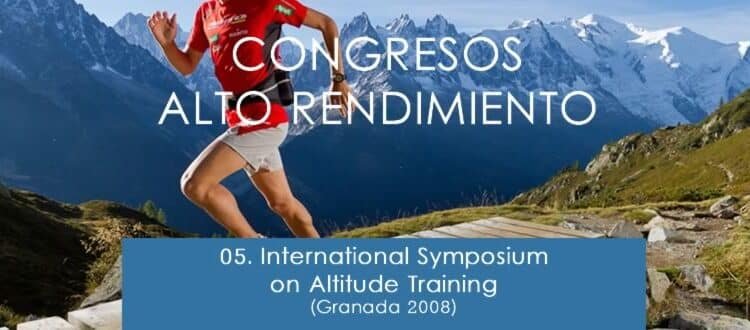Effect of the intermittent normobaric hypoxia on running economy.
Resumen
This study was designed to analyse the effect of intermittent normobaric hypoxia training(IHT) in running economy (RE). Seven subjects, middle-distance runners and triathletes, participated in the study [age 33±14; %body fat 7.7±5.7; Maximal O2 consumption (VO2max) 58.4±12.9 ml.Kg-1.min-1]. Their respective individual training schedule remained unaltered during the experimental period. They completed a minimum of 15 and a maximum of 20 sessions of IH in consecutive days, 5 days per week during 3-4 weeks with the following protocol: 6min hypoxia-4min normoxia for 90 min. During all the IH session, haemoglobin saturation (O2Sa) was monitored continuously from the fingertip by pulse oximetry, and the inspired fraction of O2 (FiO2) was programmed in each session to obtain a O2Sa around 80%. Two weeks before the beginning of the IH protocol, all the subjects performed a maximal incremental exercise test on treadmill to determine his VO2max and the minimal velocity that elicited VO2max (vVO2max).
During the week before and after the intervention, all the subjects made a whole blood extraction for the measurement of haemoglobin (Hb), %reticulocytes (%Re) and Ferritin. Submaximal treadmill running test ( 6min effort-4min recovery, 0% slope) was performed to asses RE at three velocities, corresponding at 75%, 80% and 85% of the vVO2max (V1,V2,V3). VO2, minute ventilation (VE) , ventilatory equivalent for O2 (VE/VO2), tidal volume (VT), respiratory frequency (f), respiratory exchange ratio (RER) and heart rate (HR) were averaged to the two last minutes of each run, and sample of blood was obtained for lactate concentration ([La]) analysis immediately at the end of each run.
A hypoxic tolerance test (20 min of hypoxic exposure at FiO2 of 13.4% -3500m-) was performed previously in order to known susceptibility to hypoxia and to establish the FiO2 of the first session. The average FiO2 for the first and the last series were of 11, 7% (9-13) and 10% (8.5-11.5), corresponding to a simulated height of 4500 and 5600m respectively. The averaged O2Sa measured for all session was of 82.8 (67-91). An ANOVA test for repeated measures was conducted to detect differences between the work sessions. We didn’t measure any significant difference in VO2, VE, VE/VO2, VT, f, RER, and HR. The haematological indexes, including Hb, %Re and ferritin , were not modified by the hypoxic exposure. Nevertheless, VE and VE/VO2 diminished after the exposition to IHT in noticeable percentages, 3.6% and 2.1% respectively, although not statistically significant.
Conclusión
La HNI en el descanso con 6 minutos de hipoxia y 4 minuoes de normoxia durante 90 minutos, 5 días consecutivos por semana, durante 3?4 semana, no provocaron una mejora de las medidas relativas a la EC y a los índices hematológicos en un grupo de triatletas y corredores de distancias medias.






